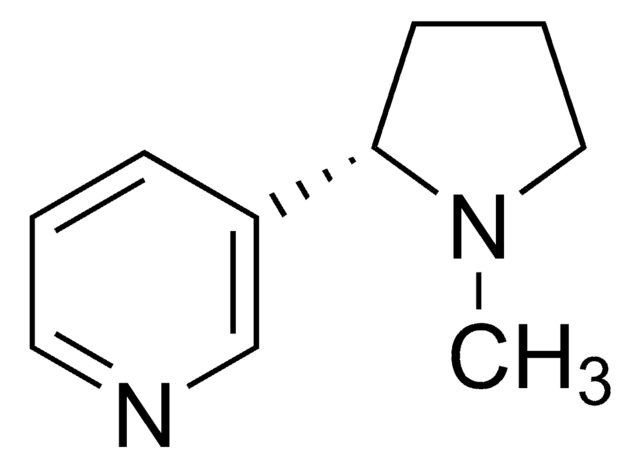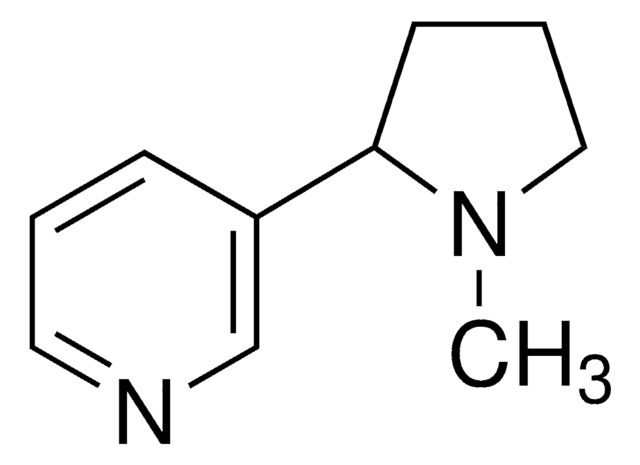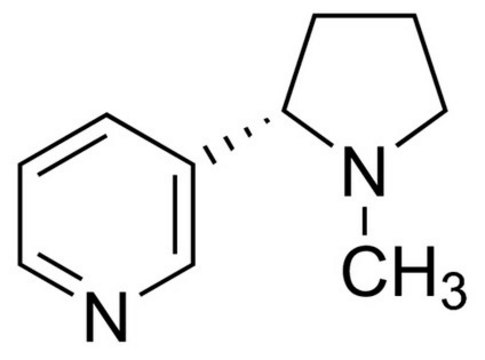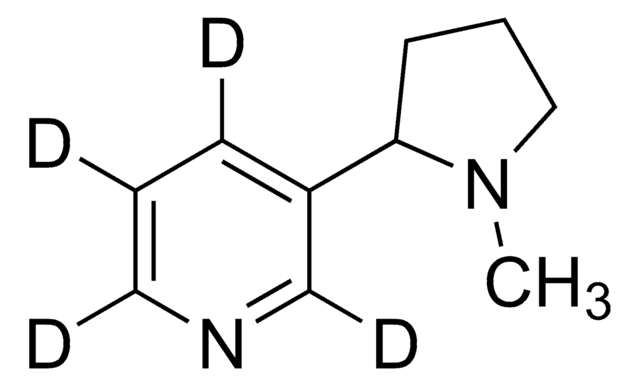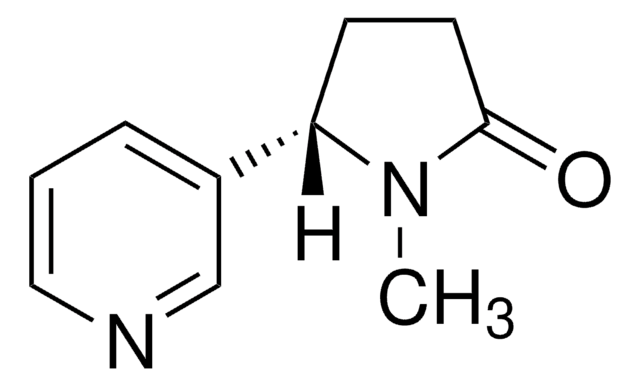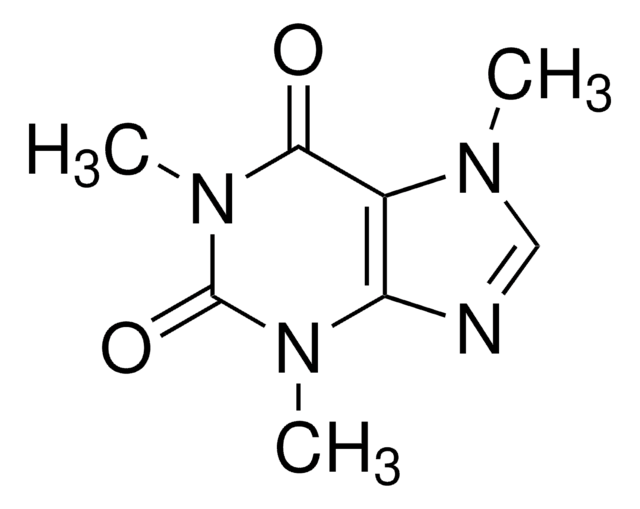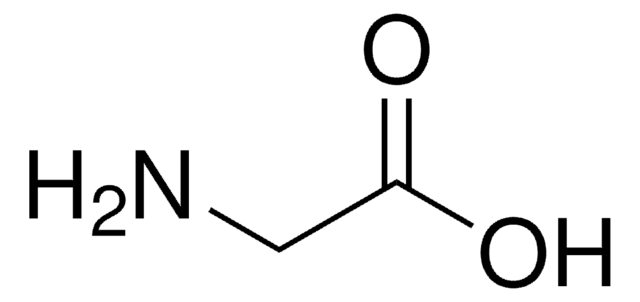N-008
S(−)-Nicotine solution
1.0 mg/mL in methanol, ampule of 1 mL, certified reference material, Cerilliant®
Synonym(s):
(−)-Nicotine solution
About This Item
Recommended Products
grade
certified reference material
Quality Level
form
liquid
feature
Snap-N-Spike®/Snap-N-Shoot®
packaging
ampule of 1 mL
manufacturer/tradename
Cerilliant®
concentration
1.0 mg/mL in methanol
technique(s)
gas chromatography (GC): suitable
liquid chromatography (LC): suitable
application(s)
forensics and toxicology
format
single component solution
storage temp.
−20°C
SMILES string
CN1CCC[C@H]1c2cccnc2
InChI
1S/C10H14N2/c1-12-7-3-5-10(12)9-4-2-6-11-8-9/h2,4,6,8,10H,3,5,7H2,1H3/t10-/m0/s1
InChI key
SNICXCGAKADSCV-JTQLQIEISA-N
Gene Information
human ... CHRNA4(1137) , CHRNB2(1141)
Looking for similar products? Visit Product Comparison Guide
General description
Application
- Chiral nicotine for neuroreceptor research: S(−)-Nicotine solution is extensively used in neuroreceptor studies, particularly targeting cholinergic receptors. This enantiopure nicotine variant helps in understanding the binding affinity and activity differences between nicotine isomers, contributing to more targeted neuropharmacological interventions (Lu and Gao, 2024).
- Pharmacological experiments in addiction research: The optically active form of S(−)-Nicotine is critical for addiction research, where it is used to investigate the pharmacodynamics and addictive properties of nicotine. Studies using this compound help in developing therapeutic strategies for smoking cessation and understanding the biochemical pathways involved in nicotine addiction (Yang et al., 2024).
- Enantiomer specificity in biochemical studies: High purity S(−)-Nicotine is crucial for assays that require precise control over biochemical properties. Its application in cholinergic receptor assays helps to elucidate the specific interactions and effects of the S(−) enantiomer compared to its R(+) counterpart, thereby enhancing the accuracy of pharmacological models (Mancuso et al., 2024).
Legal Information
related product
Signal Word
Danger
Hazard Statements
Precautionary Statements
Hazard Classifications
Acute Tox. 3 Dermal - Acute Tox. 3 Inhalation - Acute Tox. 3 Oral - Flam. Liq. 2 - STOT SE 1
Target Organs
Eyes,Central nervous system
Storage Class Code
3 - Flammable liquids
WGK
WGK 2
Flash Point(F)
49.5 °F - closed cup
Flash Point(C)
9.7 °C - closed cup
Regulatory Information
Choose from one of the most recent versions:
Certificates of Analysis (COA)
Sorry, we don't have COAs for this product available online at this time.
If you need assistance, please contact Customer Support.
Already Own This Product?
Find documentation for the products that you have recently purchased in the Document Library.
Our team of scientists has experience in all areas of research including Life Science, Material Science, Chemical Synthesis, Chromatography, Analytical and many others.
Contact Technical Service